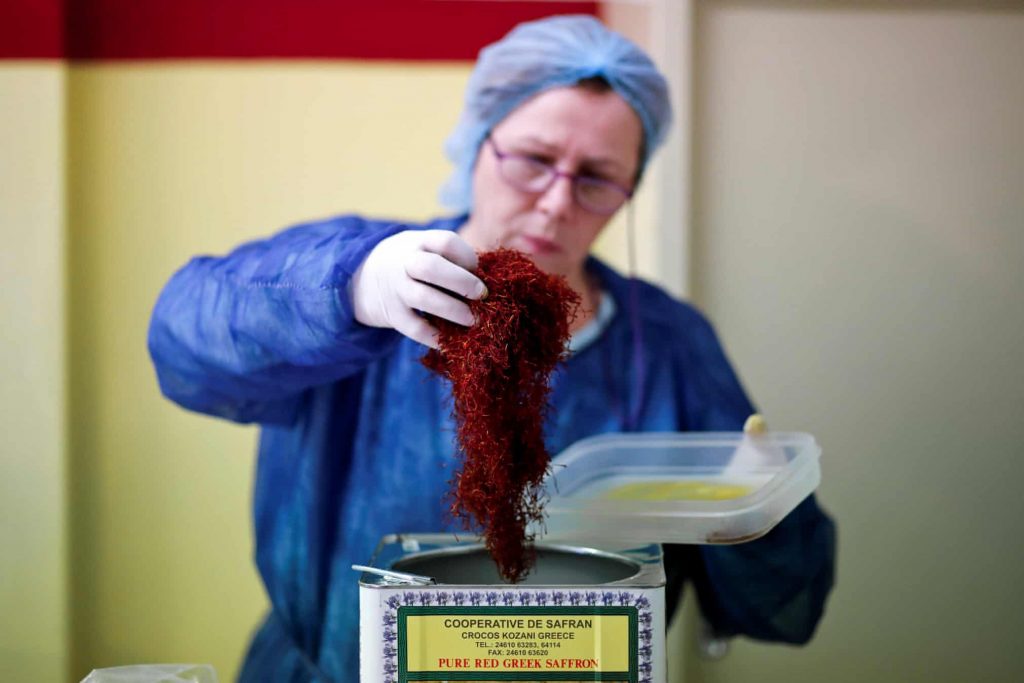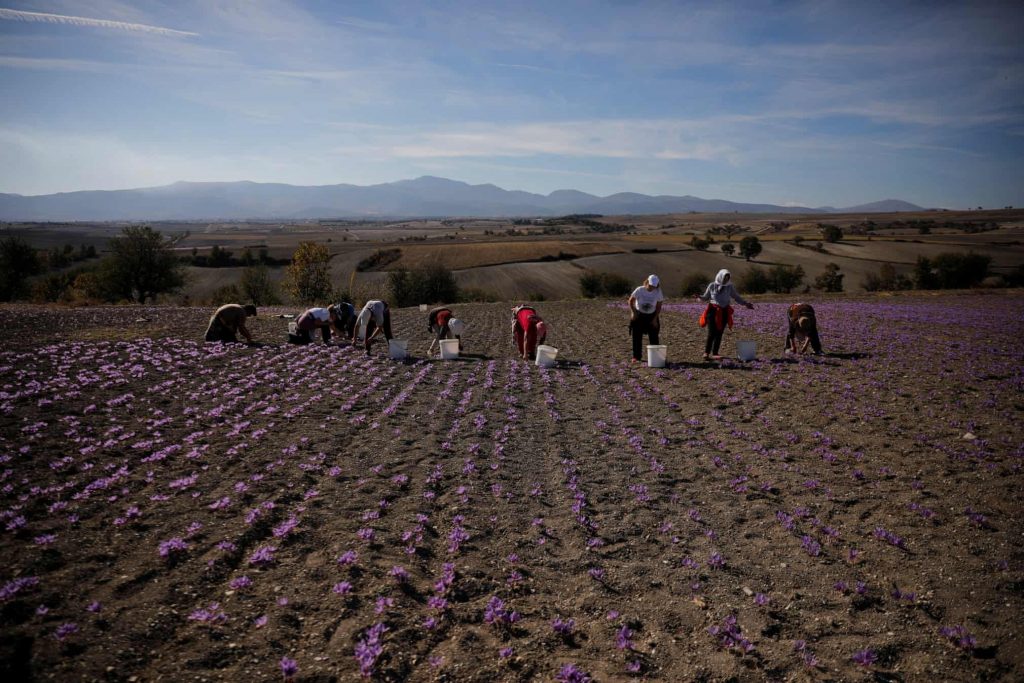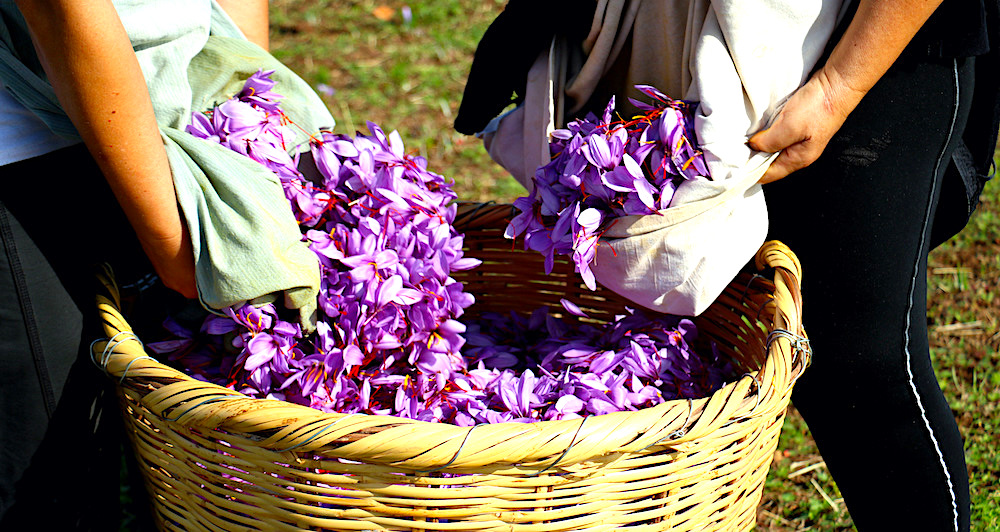The yearly saffron harvest is in full swing in Greece in the northern city of Kozani. Everywhere you look, you will see hundreds of farmers crouched over fields of blooming purple flowers for hours, picking which has long been the world’s most expensive spice.
To mark the occasion, we share our top five facts you should know about saffron and the harvest season in Greece.
1. What is saffron?
Saffron, known as krokos in Greek, is highly treasured not only for its delicate, unique taste and vibrant hue, but also because of its painstaking, labour-intensive harvesting process.
The spice originates from a flower called crocus sativus—commonly known as the “saffron crocus.” It is believed that saffron originated and was first cultivated in Greece, but today the spice is primarily grown in Iran, Greece, Morocco, and India.

2. The harvest:
Each flower produces only three threads (stigmas) of saffron, and it blooms for only one week each year. The saffron must be harvested by hand in the mid-morning, when the flowers are still closed in order to protect the delicate stigmas inside.
Once the farmers have harvested all of the saffron, the much-prized spice is taken back to the cooperative to be dried. Once ready for market, the saffron is packaged and distributed in Greece and around the world.

Around 150,000 flowers are needed to yield just one kilogram of the precious spice in its dried form. That’s why you’ll pay $10 to $13 per gram for the real deal.
3. The ancient Greek myth:
The ancient Greeks explained the existence of saffron with a myth: Krokos was a young Spartan and friend of the God Hermes. One day, the two friends were playing. While playing, Hermes hit his friend Krokos by accident on the head and he died.
At the place where he died a flower grew, symbolising the body of Krokos. Three drops of his blood fell in the center of the flower and these drops became its stigmata. Ever since the flower is called Krokos, and the stigmata give us the famous saffron.

4. What is saffron used for?
Saffron’s striking colour can be used to dye food and even fabric. Due to its unique taste, saffron is also used in cuisines around the world.
Throughout history, the spice was also used in religious practices, traditional medicine and even beauty routines.

